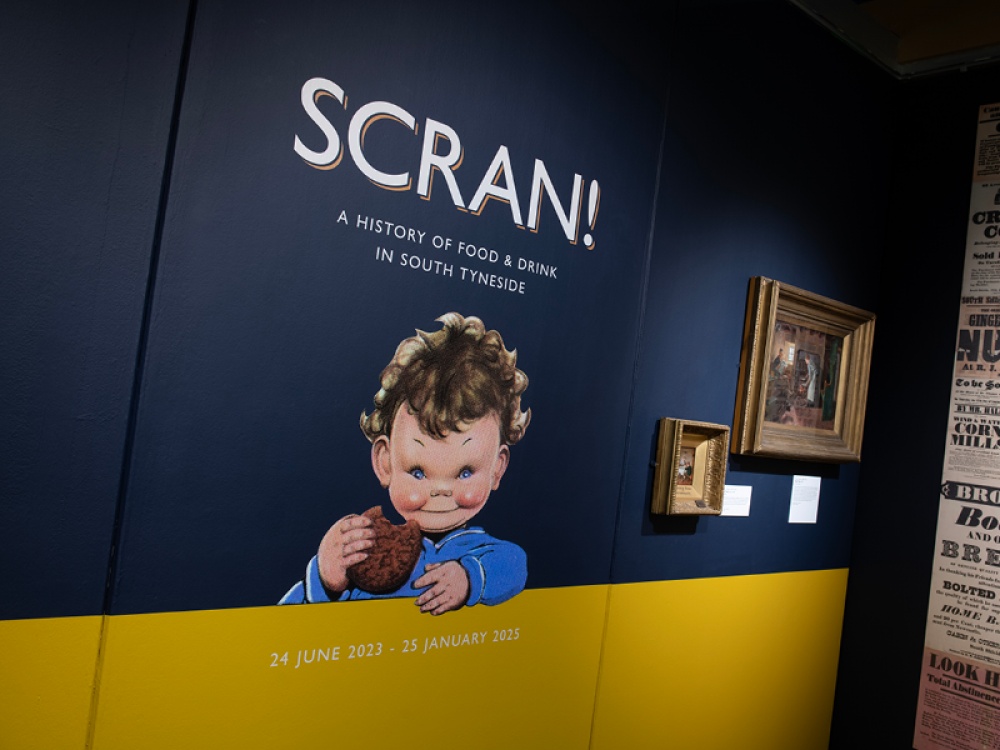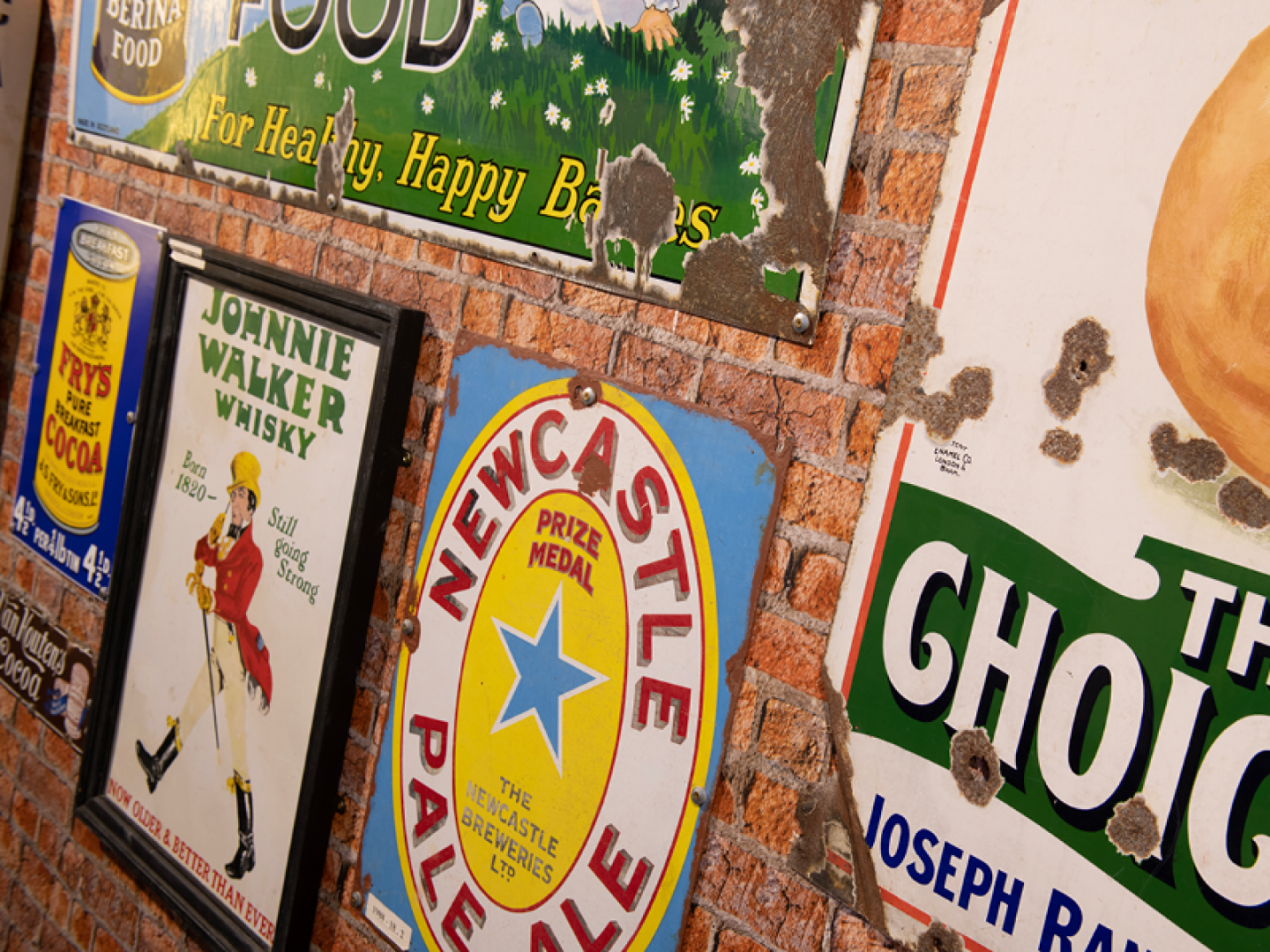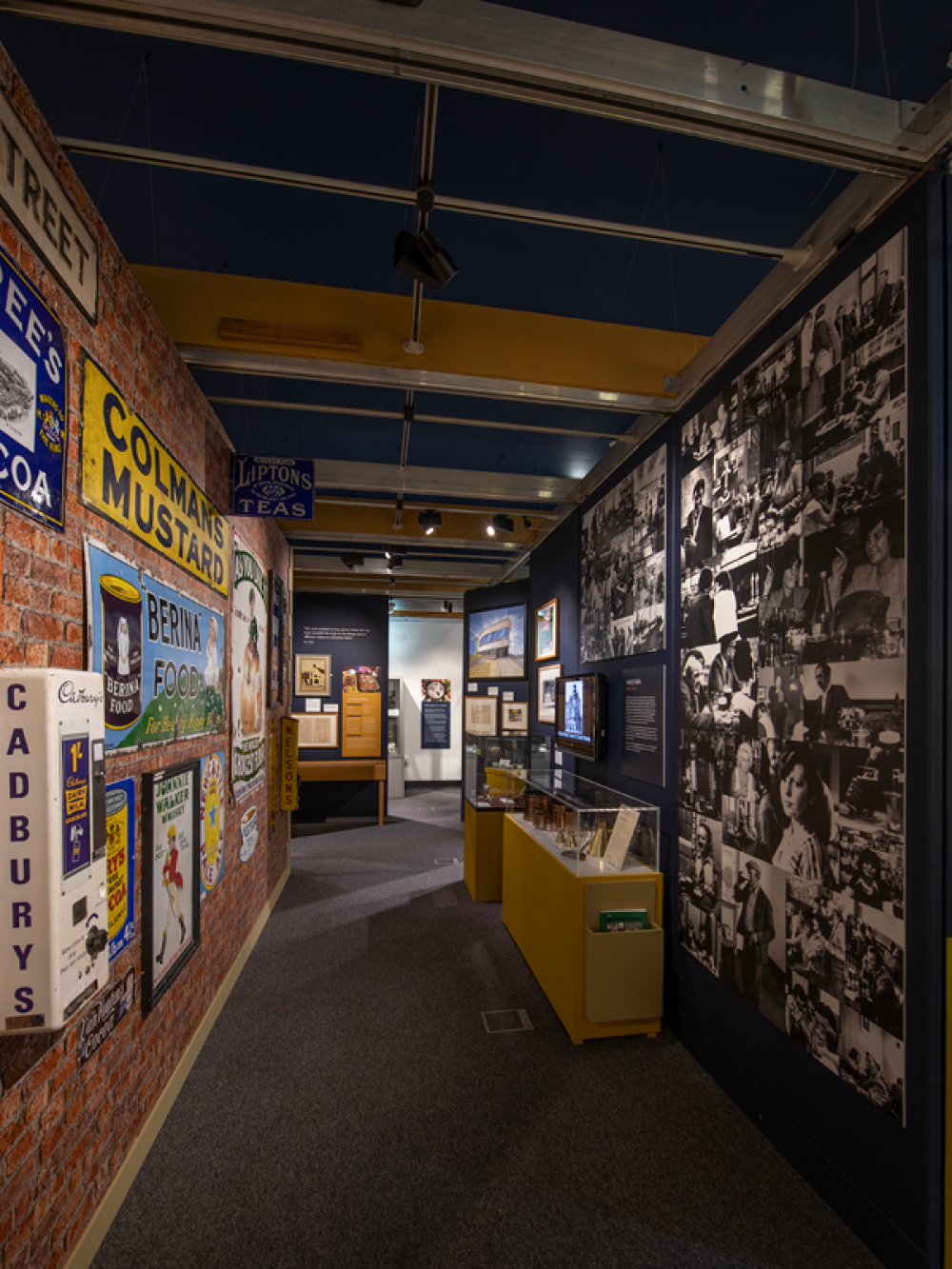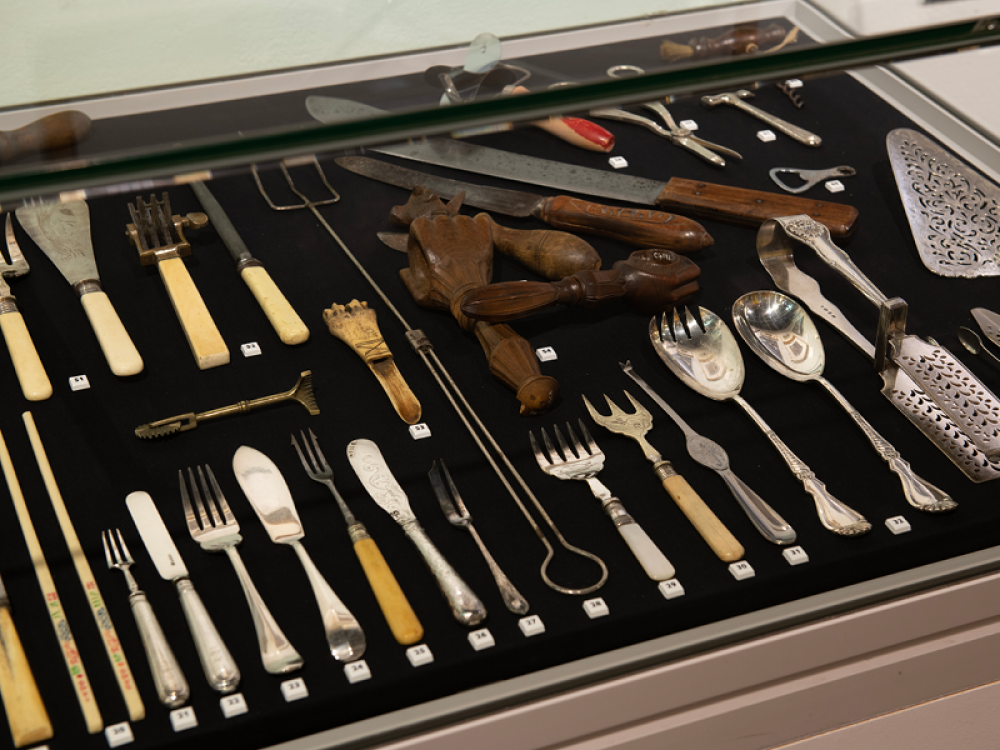How South Tyneside's Foodie Heritage is Being Celerbated in a New Exhibition

Feast your eyes on this
As a seaside town, South Shields has its fair share of seafood restaurants and takeouts, and some great spots for an ice cream, but it’s also home to a row of top Indian restaurants as well as plenty of Asian and Italian eateries. Today’s food offering has been influenced by local families and that’s something Geoff and his team wanted to celebrate with their summer exhibition – SCRAN: A history of Food & Drink in South Tyneside.
‘South Shields Museum and Art Gallery normally has quite a high turnover of exhibitions and we have a number of spaces where we display work (previously we’ve had high-profile loans including work by Turner and Renoir), and we have a main exhibition gallery which we tend to use for social history exhibitions during the summer,’ says Geoff. ‘In the past we’ve had big exhibitions on coal mining and ship building in South Tyneside. The museum is very much a social history museum and its location in the town centre means it’s based right in the heart of the community.’
This new exhibition celebrates the traditional cuisine of the North East, from regional favourites such as stottie cakes and leek pudding to singing hinnies and panaculty. ‘We were looking for a theme that would really work to connect people together – something that would get people excited and that’s fundamental to everyone,’ Geoff continues. ‘Food is very much about connecting and sharing with others and we’re very excited because this is an opportunity to do something very special, which is why we’re running the exhibition for 18 months instead of our normal run of around four months.’
Read More: 12 of the Best Spa Breaks in Yorkshire and the North East


From Roman times (when South Shields was known as Arbeia) up to the present day, visitors can learn all about South Tyneside’s food and drink scene and how it’s changed. ‘Of course, we’re home to Arbeia Roman Fort and the Romans influenced a lot of the food and drink in our region,’ Geoff explains. ‘They were cooking with olive oil rather than animal fat, they were drinking wine rather than beer (although they probably drank our local beer as well) and they imported a lot here. That was just the start of South Tyneside’s diverse food and drink scene.
‘We wanted to work with the community to capture some of the stories of our food history too. We’ve already done some work with our Bangladeshi community which features in the exhibition. South Shields is famous for its curry houses along Ocean Road but we don’t yet have enough in our collection that represents this community so we’re working with them to capture some of their stories. We’re really wanting to explore our diversity across the borough.’
Visitors will also learn the origins of some of the borough’s most iconic eateries, including Colmans fish and chips, Dicksons butchers and Minchella & Co’s ice cream. ‘They’re key local businesses which are very well known, and very well loved,’ Geoff says. ‘It’s interesting to find out more about where these families have come from and what their stories are.’
Read More: We Check Out the Luxurious Wrea Head Hall

Colmans is a family-owned business which has operated for more than 100 years, beginning in 1905 with a small shack on South Shields beach, not far from where their Seafood Temple is today. They then opened sites in Barrington Street and one near Littlehaven beach. The latter was used as a base by the Royal Marines during World War Two; it was bombed and rebuilt on a smaller scale. In 1926, they moved into their Ocean Road site (five generations of the Colman family have worked there) and in 2017, they opened the popular Colmans Seafood Temple.
Dicksons have been creating their own selection of quality products for more than six decades. M.I.Dickson opened the first shop in 1953, their Fowler Street shop in 1960 and their Wallsend shop was opened in the 70s. Now the business has grown to more than 30 shops – meaning Dicksons is now the region’s largest family-owned provider of meat and food products. The family remain proud of their North Eastern heritage.
Giuseppe Minchella moved from Italy to England in the early 1900s and sold ice cream to the miners in Boldon Colliery before offering it to the wider community. He eventually settled down in South Shields and took over an ice cream parlour in King Street, but sadly this business was bombed during the war. Inspired by their father, the Minchella brothers Luigi, Toney and Feddy developed three companies under their family name: Minchella & Co, Luigi Minchella Ltd and Toney Minchella. Now their legacy (and award-winning ice cream) lives on in South Shields. Minchella & Co has outposts on at The Elevated Walkway and Amphitheatre and on Ocean Road, while Toney Minchella has outposts at Whitburn Bents Road, South Marine Park, South Promenade and Haven Point.
‘From Roman times (when South Shields was known as Arbeia) up to the present day, visitors can learn all about South Tyneside’s food and drink scene and how it’s changed’
Read More: Beach Breaks to Book When the Crowds Disperse
‘The exhibition is here but it’s very much going to evolve over the next 18 months,’ Geoff adds. ‘We’re going to be asking locals to share their recipes and memories and we’re also running a competition for suggestions for a new ice cream for Minchella to create.’ The winning ice-cream will be put into production next year.
‘We also feature a lot of lesser-known businesses, and are including those which have closed over the years which help to show our rich diversity of food and drink,’ Geoff continues. ‘I was talking to a member of the front of house staff recently about Wright’s Biscuits, which is also featured in the exhibition. Originally set up in 1790 to produce ships’ biscuits they produced biscuits for troops during the Second World War. They moved their factory to Tyne Dock in 1898 and they had a big influence on our town. A lot of women in the town worked in Wright’s Biscuits and the person I was speaking to says we’ve had a lot of visitors over the last few days who have specifically come to find out more about them because members of their family worked in the factory and they feel a particular connection with it. Our poster for the exhibition is a mischievous character – Wright’s Biscuits’ iconic logo which was created by children’s illustrator Mabel Lucie Attwell. We’ve got a case full of packaging, tins and adverts for Wright’s Biscuits which feature this mischievous chap, and I think that’s my favourite part of the whole exhibition.’

The theme of food is something Geoff feels we can all engage with. ‘The relationships from these connections have such an impact on all of us. For example, I remember my gran used to make an amazing apple pie and that’s one of the key things I remember about her – I suppose because it was a sort of sensory experience – being with her and enjoying that time with her. Food and drink sets the scene for those moments, and it sets the scene for many of our memories. I think it’ll help further promote local businesses too, and it might give people a stronger connection with them, realising they’re not faceless or multi-national companies but are run by families who have established themselves here.’
South Shields Museum & Art Gallery will be continuing to work with local businesses and South Tyneside Council over the 18-month period. ‘We feature a lot of the pubs in South Tyneside. There are a lot of photographs remembering those that have gone and I think there’s a lot that will jog people’s memories. There’s a wonderful wall of enamel advertising signs and we’ve recreated a 1950s kitchen area too. Within the exhibition we are also tackling important issues around food banks (Hebburn Helps is doing amazing work) and also the impact of food in terms of the environment,’ says Geoff. ‘There’s some great messaging around those important themes. We’ve already had a great response and because there’s so much to see, visitors are returning because there’s too much to take in in one visit. I’m conscious that people have a perception of what museums are sometimes, but we are here for everyone in the community. Admission is free and we’re simply a space where everyone can come and enjoy time with their family and friends.’







